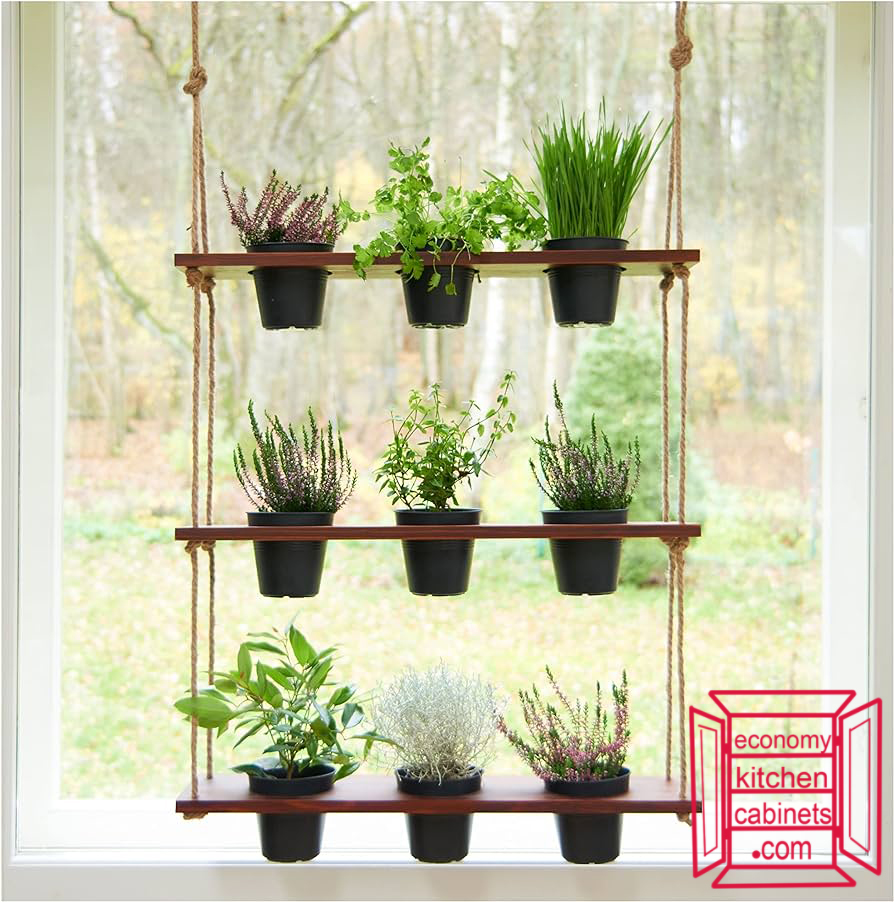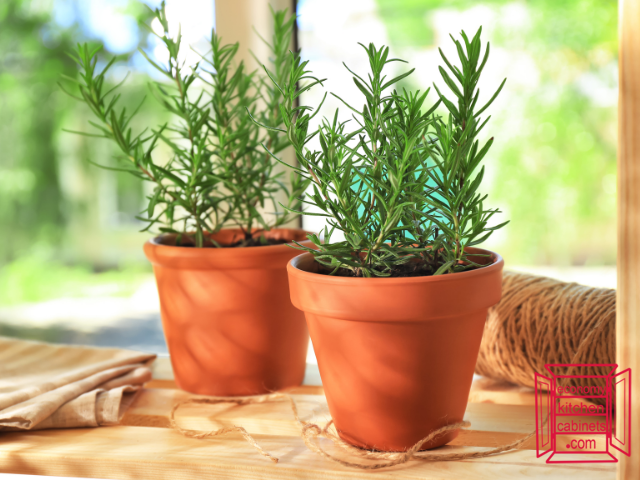Transforming your kitchen windowsill into a lush herb garden not only adds a touch of natural beauty to your home but also provides a convenient and flavorful source of fresh ingredients for your culinary creations. In this guide, we’ll explore six essential herbs that thrive in kitchen window gardens, discussing recommended varieties, benefits, flavors, and tips for growing each herb to perfection.
1. Basil:
Basil (Ocimum basilicum) is a beloved herb renowned for its aromatic leaves and versatility in the kitchen. Varieties like Genovese basil and Thai basil are well-suited to kitchen window gardens, thriving in warm, sunny conditions. Basil adds a vibrant, peppery flavor to dishes, making it ideal for pasta sauces, pesto, salads, and garnishes.

Rich in essential oils, vitamins, and antioxidants, basil offers a range of health benefits that extend beyond the kitchen. With its antibacterial, anti-inflammatory, and antioxidant properties, basil has been used in traditional medicine to treat various ailments, including digestive issues, respiratory conditions, and skin disorders. The essential oils found in basil, such as eugenol, linalool, and citronellol, possess antimicrobial properties that help combat harmful bacteria and viruses, making basil a valuable ally in supporting immune health and fighting infections.
Additionally, basil contains compounds like flavonoids and polyphenols that act as powerful antioxidants, neutralizing free radicals and reducing inflammation in the body. Whether brewed into a soothing tea, infused into topical remedies, or incorporated into culinary creations, basil offers a natural and effective way to promote overall health and well-being.
2. Mint:
Mint (Mentha spp.) is a refreshing herb prized for its invigorating aroma and cooling flavor. Varieties like spearmint and peppermint are excellent choices for kitchen window gardens, thriving in partial shade and moist soil. Mint adds a bright, refreshing flavor to beverages like mojitos, iced tea, and lemonade, as well as savory dishes like salads, sauces, and marinades.

Like basil, mint is rich in antioxidants and contains anti-inflammatory properties, which can help soothe digestive issues such as indigestion and irritable bowel syndrome (IBS). Mint also has a natural calming effect, aiding in the relief of stress and anxiety. Additionally, it can help alleviate symptoms of the common cold and respiratory conditions due to its menthol content, which acts as a natural decongestant. Furthermore, mint has antimicrobial properties that can help maintain oral health by reducing harmful bacteria in the mouth. Incorporating mint into your diet, whether through fresh leaves, teas, or oils, can provide these diverse health benefits.
Pruning is essential for keeping mint in check and promoting healthy growth. Trim back the stems and foliage regularly to encourage bushy growth and prevent the plant from becoming leggy or unruly. Harvesting mint frequently for culinary use also helps to control its growth while ensuring a steady supply of fresh leaves for cooking and garnishing.
3. Parsley:
Parsley (Petroselinum crispum) is a versatile herb known for its bright green foliage and fresh, grassy flavor. Varieties like flat-leaf parsley and curly parsley are well-suited to kitchen window gardens, tolerating a wide range of growing conditions. Also known as Italian parsley, flat-leaf parsley has a robust flavor and a slightly peppery taste that pairs well with savory dishes.
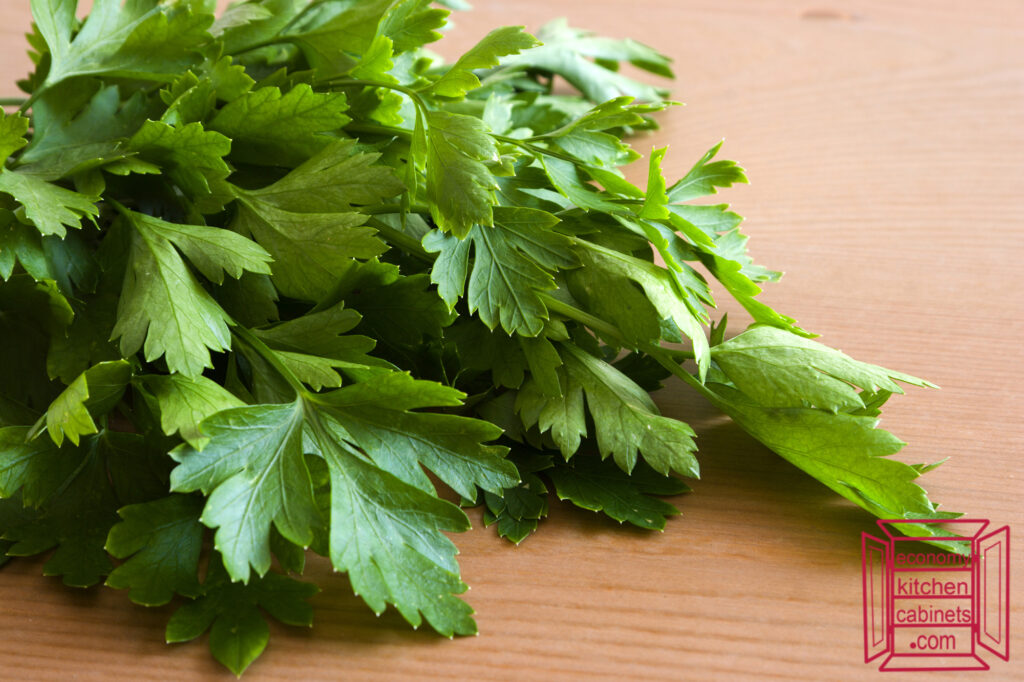
Its flat, broad leaves are easier to chop and incorporate into recipes, making it a favorite among chefs and home cooks alike. Flat-leaf parsley is commonly used in Mediterranean, Middle Eastern, and European cuisines to add freshness and depth of flavor to dishes such as tabbouleh, chimichurri sauce, pasta salads, and soups. It’s also a popular garnish for grilled meats, seafood, and roasted vegetables, adding a burst of color and flavor to the plate.
Curly parsley, with its tightly curled, frilly leaves, has a milder flavor and a slightly bitter undertone compared to flat-leaf parsley. While it may not pack as much punch in terms of flavor, curly parsley’s crisp texture and decorative appearance make it an attractive garnish for a wide range of dishes. Curly parsley is often used as a garnish for appetizers, salads, and vegetable platters, adding a touch of freshness and visual appeal to the presentation. It can also be chopped and sprinkled over grilled fish, chicken, or pasta dishes to add a subtle herbaceous flavor and enhance the overall aesthetic of the meal.
Parsley is packed with essential vitamins, minerals, and antioxidants that contribute to overall health and well-being. Both flat-leaf and curly parsley varieties are rich sources of vitamins A, C, and K, as well as folate, iron, and potassium. These nutrients play crucial roles in supporting immune function, promoting healthy vision, maintaining bone health, and regulating blood pressure. Additionally, parsley contains flavonoids and other phytonutrients with antioxidant properties that help protect cells from oxidative damage and reduce inflammation in the body. Incorporating parsley into your diet can boost nutrient intake and support optimal health from the inside out.
4. Thyme:
Thyme (Thymus vulgaris) is a fragrant herb prized for its earthy aroma and robust flavor. Varieties like English thyme and lemon thyme in a kitchen window herb garden are a delightfully simple endeavor that rewards even the most novice of gardeners with a bountiful harvest of aromatic leaves.
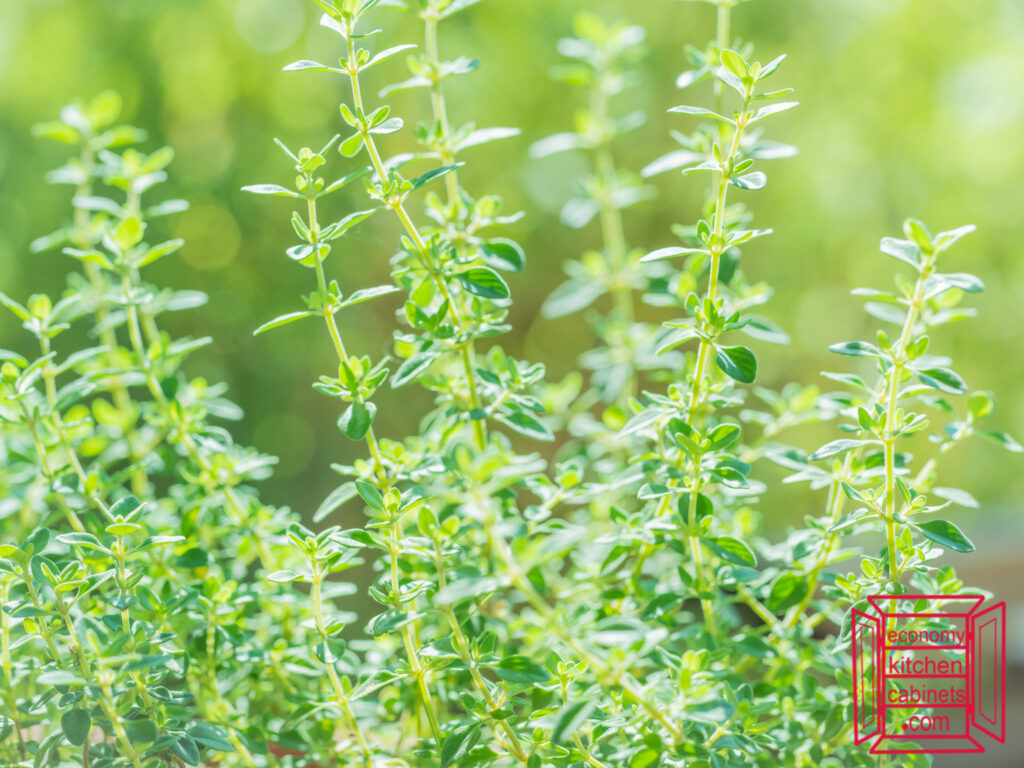
Thyme’s hardy nature and compact growth habit make it ideally suited to indoor cultivation, thriving in the warm, sunny conditions typically found on a kitchen windowsill. With minimal care and attention, thyme plants will flourish, sending up delicate stems adorned with tiny leaves that release a fragrant aroma with every brush of the hand. Regular watering, well-drained soil, and ample sunlight are all thyme needs to thrive, making it an effortless addition to any indoor herb garden.
Thyme adds depth and complexity to savory dishes like roasted meats, stews, soups, and vegetables, infusing them with a warm, savory essence. Additionally, thyme has antimicrobial properties and is used in natural remedies for coughs, colds, and respiratory ailments.
5. Rosemary:
Rosemary (Rosmarinus officinalis) is an aromatic herb renowned for its piney fragrance and bold flavor. Varieties like common rosemary and Tuscan blue rosemary are well-suited to kitchen window gardens, preferring full sun and well-drained soil. Rosemary adds a distinctive, resinous flavor to roasted meats, potatoes, bread, and marinades, elevating the taste and aroma of dishes.
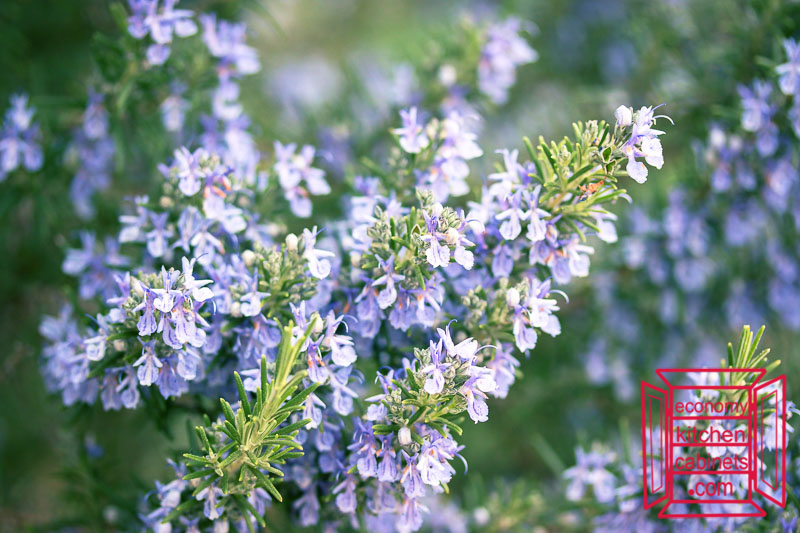
In addition to its culinary uses, rosemary is renowned for its potent antioxidant properties, which contribute to its reputation as a memory and concentration booster. Rich in antioxidants such as carnosic acid and rosmarinic acid, rosemary helps protect cells from oxidative damage caused by free radicals, thus reducing inflammation and supporting overall brain health. Additionally, rosemary contains compounds that inhibit the breakdown of acetylcholine, a neurotransmitter essential for memory and cognitive function. By promoting healthy blood flow to the brain and protecting neurons from damage, rosemary is believed to enhance memory retention, concentration, and cognitive performance. Whether used in culinary dishes, aromatherapy blends, or herbal remedies, rosemary offers a natural and effective way to support brain health and optimize mental clarity and focus.
6. Chives:
Chives (Allium schoenoprasum) are delicate herbs prized for their mild onion flavor and decorative appeal. Whether planted in pots on a windowsill or bordering a garden bed, chives provide a striking contrast to other herbs and vegetables with their vibrant green foliage and delicate purple flowers.

Varieties like common chives and garlic chives thrive in partial shade and moist, well-drained soil, making them ideal for kitchen window gardens. Chives add a subtle, onion-like flavor to salads, soups, omelets, and baked potatoes, enhancing the taste and visual appeal of dishes.
Chives offer numerous medicinal benefits thanks to their rich nutrient profile. They are a good source of vitamins A and C, which boost the immune system and promote healthy skin and vision. Chives also contain antioxidants such as quercetin and sulfur compounds, which have anti-inflammatory and antibacterial properties, potentially reducing the risk of infections and certain cancers. Additionally, chives support cardiovascular health by helping to lower blood pressure and cholesterol levels due to their allicin content. Incorporating chives into your diet can enhance not only the flavor of your dishes but also provide these valuable health benefits.
By incorporating these essential herbs into your kitchen window garden, you’ll not only enhance the flavor and aroma of your culinary creations but also enjoy the myriad health benefits and aesthetic appeal of these versatile plants. Whether you’re savoring the aromatic sweetness of basil, the refreshing coolness of mint, or the earthy richness of rosemary, each herb brings its own unique flavor profile and culinary charm to your home. With a little care and attention, your kitchen window garden will flourish, providing a constant source of inspiration and delight for all your culinary adventures.
Next time: Advanced Herbs for Your Kitchen Window Garden: A Guide for Cilantro, Sage, Oregano, Dill, and Lavender

